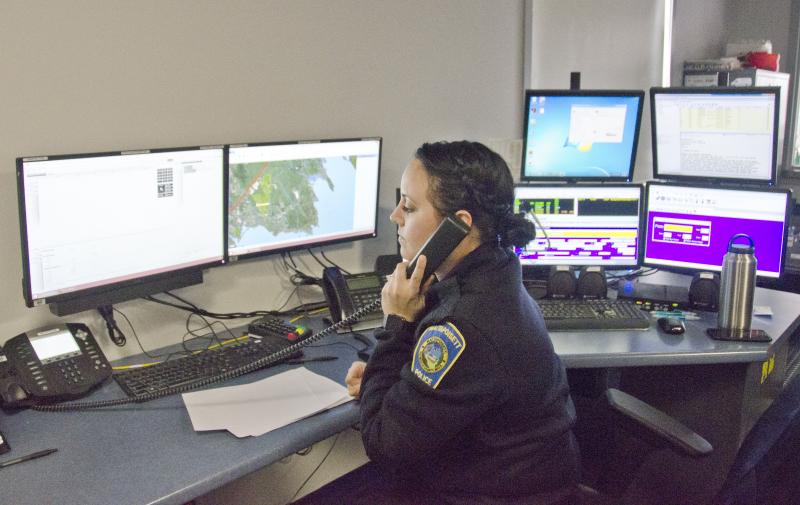New 911 system in Mattapoisett has improved tracking
The Mattapoisett Police Department’s new 911 system lets officers to zero in on the location of a caller, communicate with the hearing impaired through text and will one day allow the transmission of video and photos.
Paid for by the state, Next Generation 911 is “more robust” than the old version, said Police Chief Mary Lyons. The system went online Jan. 25 and is already making it easier for dispatchers to handle the more than 700 calls expected annually.
“It’s been well received,” said Officer Kevin Pavao. “I think we feel it’s a nicer system.”
The new, Internet-based system allows for more precision when responding to calls.
When someone dials 911, the network will display a topographical map using satellite data for the person’s location. Plus, it can track a caller in real time.
“Say you’re lost at the town dump, [the 911 system] will ping you to roughly where you are. We can measure out, right in the software, the end of Tinkham Hill Road, and draw it out to where you are,” Pavao explained.
Since there are several streets in town with the same or similar names, knowing a caller's location also reduces the risk of first responders showing up at the wrong location.
And the new system doesn't work only on land, it also works on the sea. Pavao said the department can now pinpoint someone’s location in the harbor. If a boater is in trouble, the location will appear on the map and can thereby reduce response time.
Officers were trained on the voice over Internet protocol program before it went live, and they have found the interface easier than the old E-911 landline system. The system went from two small computer screens to seven, including a screen that can handle TTY communications.
TTY, short for teletypewriter, enables the hearing impaired and those who cannot speak to communicate via type. With E-911, officers couldn't tell if a caller was hearing impaired and the person had to use taps to tell what type of emergency he or she had.
With Next Gen 911, there's no guessing game, and the dispatcher and caller can type messages back and forth.
Officers said these improvements, along with training and the quality of the program have made for a safe transition. A press release from the department stated, “Citizens will not notice a difference when calling 911, but rest assured the new system will provide a more accurate, detailed location of callers, whether on a cell phone or a traditional telephone.”
According to Pavao, the state piloted Next Gen 911 for a few years before officially implementing it. Eventually every town will have the upgrade, paid for through the 911 fees attached to phone bills. Marion Police Chief Lincoln Miller said his department is scheduled to get the system in October. Rochester is moving to a regional 911 district that already has Next Gen 911.
With the new technology, upgrades and apps can be added as the state allows. In addition to texting, one day the program will even be able to transmit information from a car’s crash notification system to police.












